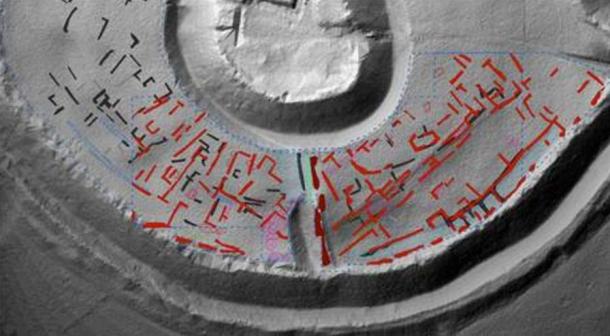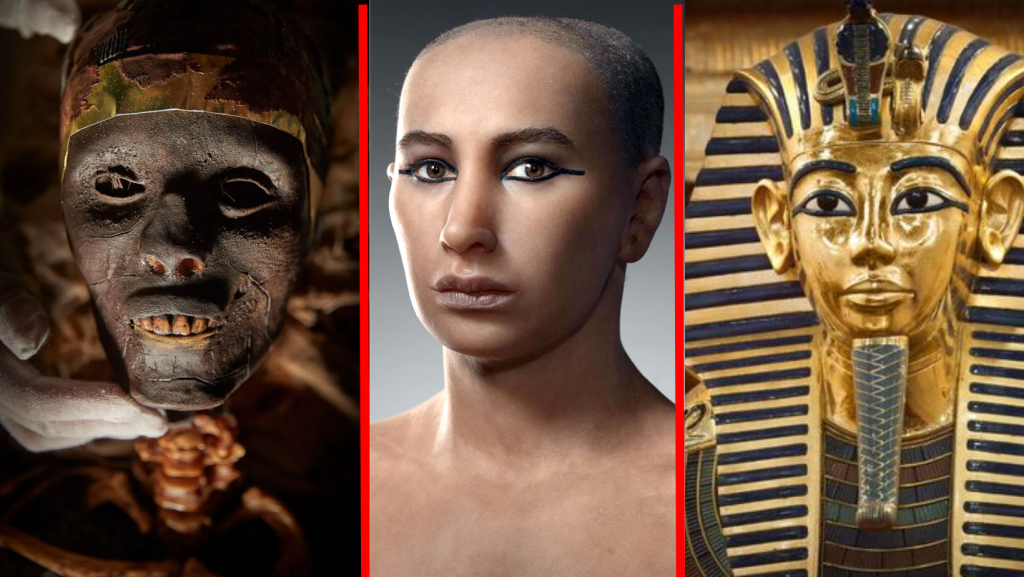Old Sarum archeological site in Wiltshire, England has a rich history covering at least 5,000 years. Nevertheless, the site selection of William the Conqueror for his royal castle in the 11th century left the mark on this historic landmark.

Geophysical surveys suggest that what lies beneath the surface can be one of the biggest royal medieval palaces ever discovered, built within the grounds of a vast Iron Age fortress, and hidden beneath fields for more than 700 years.
According to a report in The Independent, the high-tech scans carried out by archaeologists from the University of Southampton, including magnetometry, earth resistance, ground-penetrating radar, and electric resistivity tomography survey, have revealed the foundations of dozens of houses and an enormous, previously unknown complex, measuring 170 ms (558 ft) long and 65 m (214 ft) wide, which is believed to have been a royal palace.
“The prime candidate for constructing it is perhaps Henry I sometime in the early 12th century,” said one of Britain’s leading experts on high-status medieval buildings, Dr. Edward Impey, Director-General of the Royal Armouries.
The complex was arranged around a large courtyard with 3 m (10 ft) wide walls and included a long building, which was probably a grand hall. There is also evidence of towers and multi-storey buildings. If it is indeed a medieval royal palace, it is the largest of its kind ever found in Britain. Up until now, archaeologists were only aware of the much smaller complex on top of the man-made castle mound.

Old Sarum was originally an Iron Age hill fort, built-in 400 BC on a site that had been inhabited since at least 3,000 BC. The site was used by the Romans, becoming the town of Sorviodunum. The Saxons also used the site as a stronghold against marauding Vikings.
In the 11 th century, William the Conqueror, having gained control of England, chose Sarum as the location for a royal castle. The fact that it lay inside a large hill fort meant that defenses could be constructed very quickly.
The castle was built on a motte (raised earthworks) protected by a deep dry moat in 1069, three years after the Norman conquest.
The construction of a cathedral and bishop’s palace occurred between 1075 and 1092. A royal palace was then built within the castle for King Henry I and subsequently used by Plantagenet monarchs.

By 1219, the limitations of space on the hilltop site had become a cause for concern, with the cathedral and castle in close proximity and their respective chiefs in regular conflict.
The abandonment of Old Sarum by the clergy during the 1220s marked the end of serious royal interest in the castle. The castle continued in use but was largely abandoned by the 16th century.
The new research has enabled archaeologists to piece together the layout of the old Medieval city, shedding new light on the urban planning of a Norman city.
“This is a discovery of immense importance,” said historian, Professor David Bates of the University of East Anglia. “It reveals the monumental scale of building work taking place in the earlier 12th century.”
While the significance of Old Sarum has been known about for some time, only now are archaeologists beginning to piece together the long-vanished city buried beneath the green fields that thousands of tourists visit every year.





